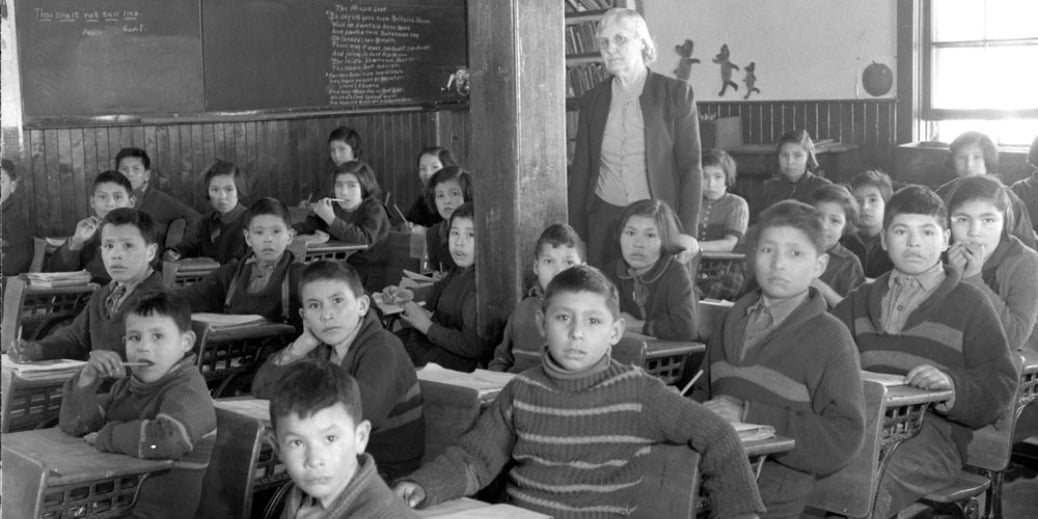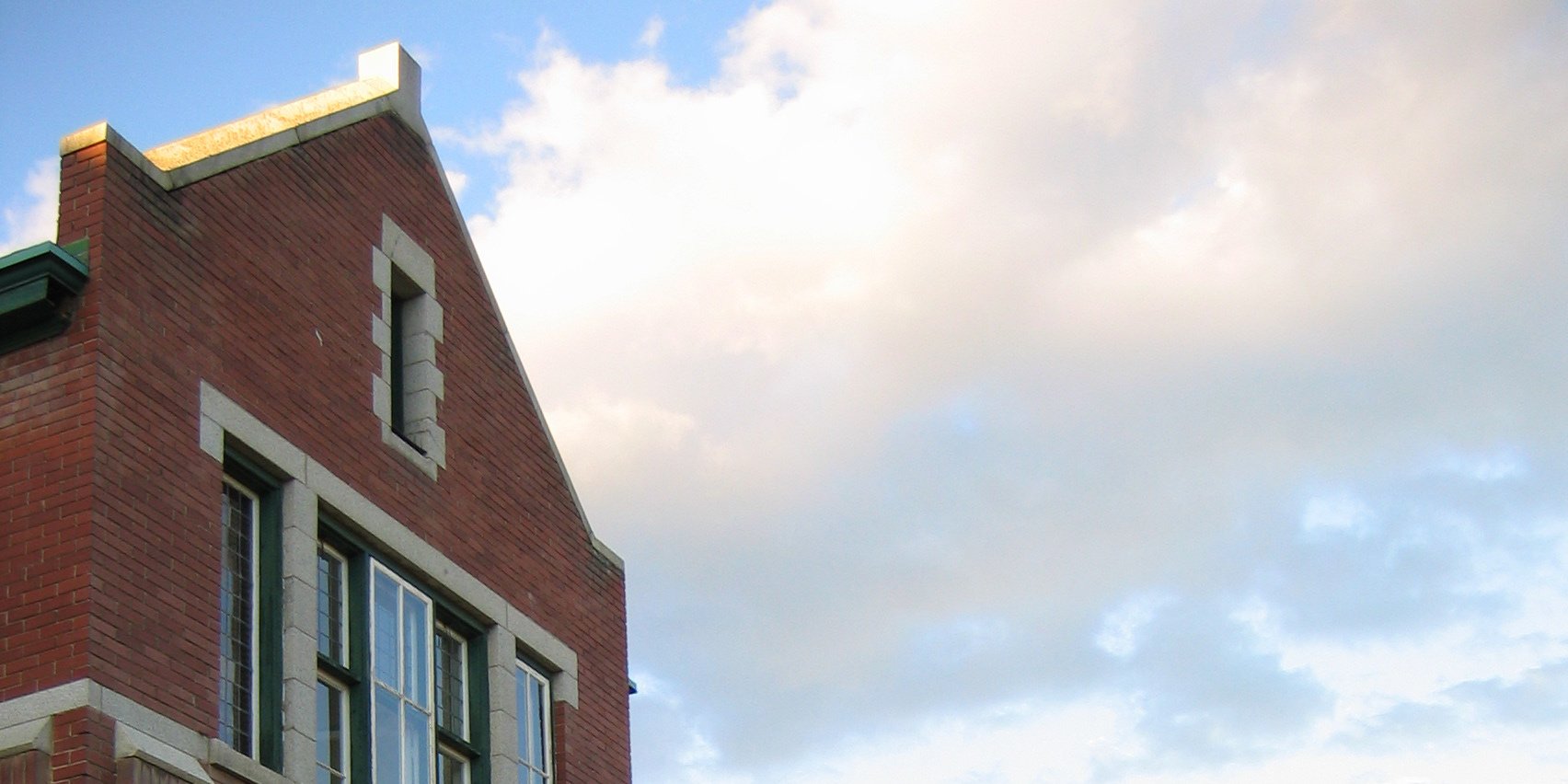1 min read
Indian Residential Schools Legacy - Learn More, Read More
It is important for those who did not attend an Indian residential school to remember that the legacy of those dark halls did not end with Prime...

The definition of “myth”, according to the Oxford Canadian Dictionary, is “a widely held but false notion.” When it comes to the topic of Indigenous Peoples there are many widely held but false notions or myths.
Myths are different from stereotypes. A stereotype is “a widely held but fixed and oversimplified image of a particular type of person or thing.” There are also many widely held but false stereotypes about Indigenous Peoples.
Myths about Indigenous Peoples are varied but many have the common theme that Indigenous Peoples “have it easy” compared to non-Indigenous Canadians.
“Negative views of Aboriginal peoples (13%). Just over one in ten expresses his or her first impression of Aboriginal peoples in clearly negative terms pertaining to special treatment or negative attributes. This includes mention of tax breaks and other rights and privileges (5%), reliance on welfare or government handouts (3%), that Aboriginal peoples are lazy or don’t work to contribute to society (2%), and generally negative feelings (3%). The proportion citing such impressions in urban Canada is essentially unchanged since 2009.” [1]
How do we put an end to these myths? By educating ourselves and others about the realities so we and they can counter the myths with facts. Here are some of the most persistent myths:
The “free ride” myth is the foundation for many of the other myths and owes its genesis to s. 91(24) of the British North America Act 1867 when fiduciary duty for "Indians, and Lands reserved for the Indians" was assumed by the Canadian Parliament.
Fiduciary duty applies to Indians and lands reserved for Indians on reserves. Fiduciary duty requires the Crown to act in accordance with its role as a trustee of “Indians, and Lands reserved for the Indians.”
Eventually, fiduciary duty will disappear as it has in cases such as the Nisga’a Final Agreement where there are no bands, no reserves, there are no status or non-status Indians. It is a place where the Crown does not have a fiduciary duty because the Indian Act is gone.
For the reserves that are still under the Indian Act, the federal government is responsible for providing programs and services that most non-Indigenous communities in Canada receive from provincial and municipal levels of government. In other words, the same services are provided but just through different levels of government.
What is frequently overlooked when housing, education, health, social services, infrastructure, water and waste management and taxes are discussed from the current perspective is that the terms negotiated in historic treaties are still in effect. When the chiefs negotiated historic treaties they realized that their formerly self-sustaining, self-governing world was changing and they needed certain provisions to ensure the survival and continuation of their people. The treaty articles they negotiated included education, economic assistance, health care, livestock, agriculture tools, and agricultural training.
They were negotiating with a government, led by John A. Macdonald, that had the goals of removing Indigenous Peoples from their land, gaining access to natural resources, opening up the country for settlers, and constructing a railway from Upper Canada to the Pacific Ocean.
In 2011, the auditor general's report Programs for First Nations on Reserves, concluded, "The education gap between First Nations living on reserves and the general Canadian population has widened, the shortage of adequate housing on reserves has increased, comparability of child and family services is not ensured."
Canada is a vast country (9.985 million sq km) but just 0.2 percent of its total landmass is reserve land. That 0.2 percent of Canada’s landmass is home to 339,595 Indigenous people (2016 Census), or 0.2% of the landmass houses 20% of the Indigenous population.
Some reserves are tiny, some are vast distances from urban centres, education facilities, health centres, and employment opportunities. Don’t make the mistake of equating reserves with traditional or treaty territories which can be vast.
Traditional lands refer to an area that a Nation has occupied and used for many generations, long before reserve borders were imposed by the Indian Act. When reserves were designated, traditional usage and ceremonial sites were not always considered. Some Nations were relocated to reserves in areas that were completely alien to their traditional lands.
As designated in the Indian Act:
Reserves are held by Her Majesty for the use and benefit of the respective bands for which they were set apart, and subject to this Act and to the terms of any treaty or surrender, the Governor in Council may determine whether any purpose for which lands in a reserve are used or are to be used is for the use and benefit of the band.
The Canadian government passed legislation in the late 19th and early 20th centuries allowing the government to expropriate portions of reserve land to provide land for public utility rights-of-ways (railways, transmission lines and highways) - often done without the consent of the Nation and without compensation. It is this expropriation that has resulted in the fragmentation and disruption of many reserves. In many cases, the province or Crown further retains subsoil rights on the reserve, which means band members do not 'own' the minerals found there.
Coastal waters and tidal lands do not form part of the reserve either in most cases. Although colonists tried to justify the small sizes of many reserves along coastal British Columbia by their access to waterways, Indigenous fishing grounds and their resources have been restricted by provincial and federal regulations.
The issue of [independent] fishing licenses to Indians is especially to be depreciated. They are wards of the Dominion Government and specially treated and protected... It is not deemed advisable to grant Indians “independent” licenses as they are liable to become difficult to manage by the authorities.
William Henry Barker, BC Packers, to the Hon. J.D. Hazen, Minister of Fisheries, August 19, 1913 [2]
The Canada Mortgage and Housing Corporation (CMHC) offers many programs to assist both Indigenous and non-Indigenous people to meet their housing needs. For Indigenous people, the assistance programs are only applicable to dwellings on reserve lands. First Nations, or status Indians, can apply for social housing programs offered by the CMHC. The housing programs for Indigenous people are mainly designed to give low-income families access to rental housing.
Bands and First Nations that meet CMHC lending criteria apply to a bank for conventional mortgage funds to finance the social housing construction, usually with CMHC providing loan insurance. The band rents the housing units to its members and maintains the mortgage. On many reserves, except some that have developed self-government agreements, the house is owned but the land is not – therefore it cannot be sold - which makes it impossible to build up equity in your home, as is possible for non-Indigenous people. Additionally, the reality for most people is that they need to take out a loan in order to buy a house and loans require collateral.
The housing shortage on-reserve is in the range of 20,000 - 35,000, according to Indigenous and Northern Affairs Canada (2011), with the shortfall growing by an estimated 2,200 units every year.
The population growth rate coupled with the shortage of adequate housing results in people living in unhealthy and overcrowded conditions.
Here are some “highlights” regarding the housing conditions of Indigenous Peoples from the 2016 Census of Population:
Of the 977,230 First Nations people who lived in Canada in 2016, about one-quarter (24.2%) lived in a dwelling in need of major repairs. In comparison, 6.0% of the non-Aboriginal population reported living in a dwelling in need of major repairs.
In 2016, 18.3% of Aboriginal people lived in housing that was crowded.
Just over one in ten (11.5%) Aboriginal people lived in housing with a one-bedroom shortfall; 4.0% lived in housing with a two-bedroom shortfall, and 2.8% lived in a dwelling with a shortfall of three or more bedrooms. While a lower proportion of the non-Aboriginal population lived in housing that was crowded (8.5%), the distribution of the types of shortfalls was similar.
Maintenance is also a huge factor. Many reserves are situated long distances from hardware stores or have fly-in access only so have to bring in building supplies by air.
Employment opportunities and rates on reserves vary considerably due to general economic circumstances in a particular region and the presence or absence of on-reserve resource bases that can generate employment. Given that in many circumstances incomes are low and employment prospects poor, it is not surprising that a large proportion of the Indigenous population is unemployed and lives in poverty.
Going back to the free housing myth, poor and scarce housing leads to too many people living in housing units that are frequently riddled with mould, not weatherproof, and insufficiently heated - the ideal incubation setting for respiratory conditions.
This myth is proclaimed frequently and is presented as a testament that Indigenous People in Canada have a massive tax advantage. In order for this myth to be true, it would have to be all Indigenous people are exempt from paying all taxes but the reality is that it is only status Indians who are exempt from paying taxes and only in certain situations.
Federal tax exemptions for status Indians have existed at least since the consolidation of the Indian Act in 1876 but only apply in very specific and limited conditions. Under sections 87 and 90 of the Indian Act, status Indians do not pay federal or provincial taxes on their personal and real property that is on a reserve. Personal property includes goods, services and income as defined under the Canada Customs and Revenue Agency policies. As income is considered personal property, status Indians who work on a reserve do not pay federal or provincial taxes on their employment income.
Initially, the purpose of the exemption was to preserve the entitlements of status Indians to their reserve lands and to ensure that the use of their property on their reserve lands is not eroded by taxes. Section 87 also exempts from the federal Goods and Services Tax (GST) the goods and services bought by status Indians at businesses located on-reserve. Goods and services purchased off-reserve by status Indians but delivered to the reserve are also tax-exempt.
To put it in perspective, somewhat less than half of all registered status Indians live on reserve so less than 1% of the total population of Canada is exempt from paying certain taxes.
To say that all Indigenous Peoples receive free post-secondary funding is misleading because it implies all Indigenous Peoples are eligible for funding. This is not the case. Only status Indians are eligible to receive funding for postsecondary education through Indigenous Services Canada funding - non-status Indians, Inuit and Métis are not eligible for this funding. And again, post-secondary education funding is part of the legal and constitutional obligation of the federal government.
While in some communities the rate of high school graduation is increasing, the graduates often step off the path to higher education at that point due to the lack of available funds. If they live off-reserve, they are often not eligible to receive funding.
This section from Chapter 4 Programs for First Nations on Reserve of the 2011 June Status Report of the Auditor General of Canada gives a snapshot of the funding situation:
4.21 Post-secondary funding. In line with our 2004 audit, the Public Accounts Committee recommended that INAC review its post-secondary funding mechanisms, noting that existing mechanisms did not ensure equitable funding to as many eligible students as possible. . . Again, as in 2004, we found that the current funding mechanism and delivery model used to fund post-secondary education does not ensure that eligible students have equitable access to post-secondary education funding.
In order to create additional opportunities for their members some bands set aside funding within their budgets to assist their members in obtaining a post-secondary education. These programs are similar to scholarship programs established by post-secondary institutions and other organizations that want to see the advancement of youth. But it means they may have to take badly needed funds from housing, infrastructure, health budgets etc.
Cultural diversity within the Indigenous population is frequently not recognized nor respected in common practice. There is a misconception that Indigenous Peoples are one homogenous group who share the same histories, culture, traditions, worldviews, language, needs, and desires. Little could be further from the truth.
Let’s take a look at First Nations. There are over 600 bands and over 2,000 reserves - each one with a distinct history that shaped their particular cultural identity. They each have distinct economies, capacities, and challenges.
In BC alone there is an amazing diversity of Indigenous culture and language - there are over 200 First Nation communities in the province - each with its own unique culture, traditions, and history. These 200 communities represent 60% of the Indigenous languages spoken in Canada. Speaking of language, did you know that outside of Quebec, English is becoming the common language of Indigenous people in Canada?
Recognition of the unique history, culture and traditions of each community is a fundamental first step Canadians can take in respecting Indigenous Peoples.
Residential schools are not "ancient history" as the last one closed in 1996. It may seem as though they belong to a dark and ancient history due to the horrific conditions the 150,000 children (of which 6,000 died or disappeared) were subjected to.
NOTE: Not long after this article was written in 2018, former students of Kivalliq Hall in Rankin Inlet in what is now known as Nunavut won a court battle to have Kivalliq Hall included as an IRSSA-Recognized School. While this article states that the last residential school in Canada to close was in 1996, Kivalliq Hall being the last residential school to close in 1997 is an important detail to note when recounting and learning about Indigenous history.
That’s not ancient history.
The mandate of the schools was to assimilate the children into settler society. The actions taken to fulfil the mandate of assimilation were labelled “cultural genocide” by Supreme Court Chief Justice Beverley McLachlin in 2015. Genocide is not a term most people associate with Canada.
What constitutes genocide? Article II of the Genocide Convention contains a narrow definition of the crime of genocide, which includes two main elements:
- A mental element: the "intent to destroy, in whole or in part, a national, ethnical, racial or religious group, as such"; and
- A physical element, which includes the following five acts, enumerated exhaustively:
- Killing members of the group
- Causing serious bodily or mental harm to members of the group
- Deliberately inflicting on the group conditions of life calculated to bring about its physical destruction in whole or in part
- Imposing measures intended to prevent births within the group
- Forcibly transferring children of the group to another group
Children as young as six were forcibly removed from their homes. From the moment they crossed the threshold of the school they were thrust into a harsh, unforgiving, linguistically and culturally alien world. Punishment was often severe, and sexual, physical and psychological abuse was common. The legacy of the trauma those children suffered is carried forth through the generations.
A frequent extension of the “residential schools are ancient history” myth is the question “Why can’t they just get over it?”
Senator Murray Sinclair, former head of the Truth and Reconciliation Commission, made these comments in regard to a fellow senator who posed the same question:
My answer has always been: Why can't you always remember this? Because this is about memorializing those people who have been the victims of a great wrong. Why don't you tell the United States to 'get over' 9/11? Why don't you tell this country to 'get over' all the veterans who died in the Second World War, instead of honouring them once a year? . . . We should never forget, even once we have learned from it because it's part of who we are. It's not just a part of who we are as survivors and children of survivors and relatives of survivors, it's part of who we are as a nation. And this nation must never forget what it once did to its most vulnerable people.
The reach and impact of this myth are almost mythical in proportion.
Its roots are in the “invisible Indian” myth, which in turn has its roots in the Doctrine of Discovery.
The Doctrine of Discovery was used by European monarchies, beginning in the mid-fifteenth century, as a means of legitimizing the colonization of lands outside of Europe. It was issued in 1493, the year after Christopher Columbus “arrived” on the shores of what is now known as North America. The Doctrine of Discovery provided a framework for Christian explorers, in the name of their sovereign, to lay claim to territories uninhabited by Christians. If the lands were vacant, then they could be defined as “discovered” and sovereignty claimed.
The presiding theory of the time was that Indigenous Peoples, because they were non-Christians, were not human and therefore the land was empty or terra nullius. When Christopher Columbus arrived in 1492, it is estimated that the Americas were actually occupied by 100 million Indigenous Peoples - which is about one-fifth of the human race at that time - who had been living their traditional lives on the land since time immemorial. But, because they were not Christians the land was deemed terra nullius. They were invisible. With confederation, they moved from invisible to savages, as termed in 1879 by John A. Macdonald:
When the school is on the reserve, the child lives with its parents, who are savages, and though he may learn to read and write, his habits and training mode of thought are Indian. He is simply a savage who can read and write.
It wasn’t until amendments to the Indian Act in 1951, that they were actually recognized as “people.” Prior to that, a person was “an individual other than an Indian.”
Making them vanish was the goal of assimilation. They had to vanish in order for the government to gain access to their lands and resources, and encourage Europeans to settle in Canada. The government took a number of approaches to make them vanish, as listed here in 21 Things You May Not Have Known About The Indian Act.
But, vanish they did not. Today, Indigenous Peoples are the fastest-growing segment of the population. Ever since the Truth and Reconciliation Commission of Canada published its report on residential schools and 94 Calls to Action for reconciliation in 2015, awareness of the treatment of Indigenous Peoples at least since confederation has increased sharply.
[1] Environics Institute, Canadian Public Opinion on Aboriginal Peoples June 30, 2016
[2] John Sutton Lutz, Makúk A New History of Aboriginal-White Relations, UBC Press 2009, p.239
Featured photo: Unsplash

1 min read
It is important for those who did not attend an Indian residential school to remember that the legacy of those dark halls did not end with Prime...

In August 2018, the federal government announced it would declare a federal statutory holiday to mark the legacy of the residential school system....

Fifty-eight percent of young adults living on reserve in Canada have not completed high school, according to the 2011 National Household Survey...